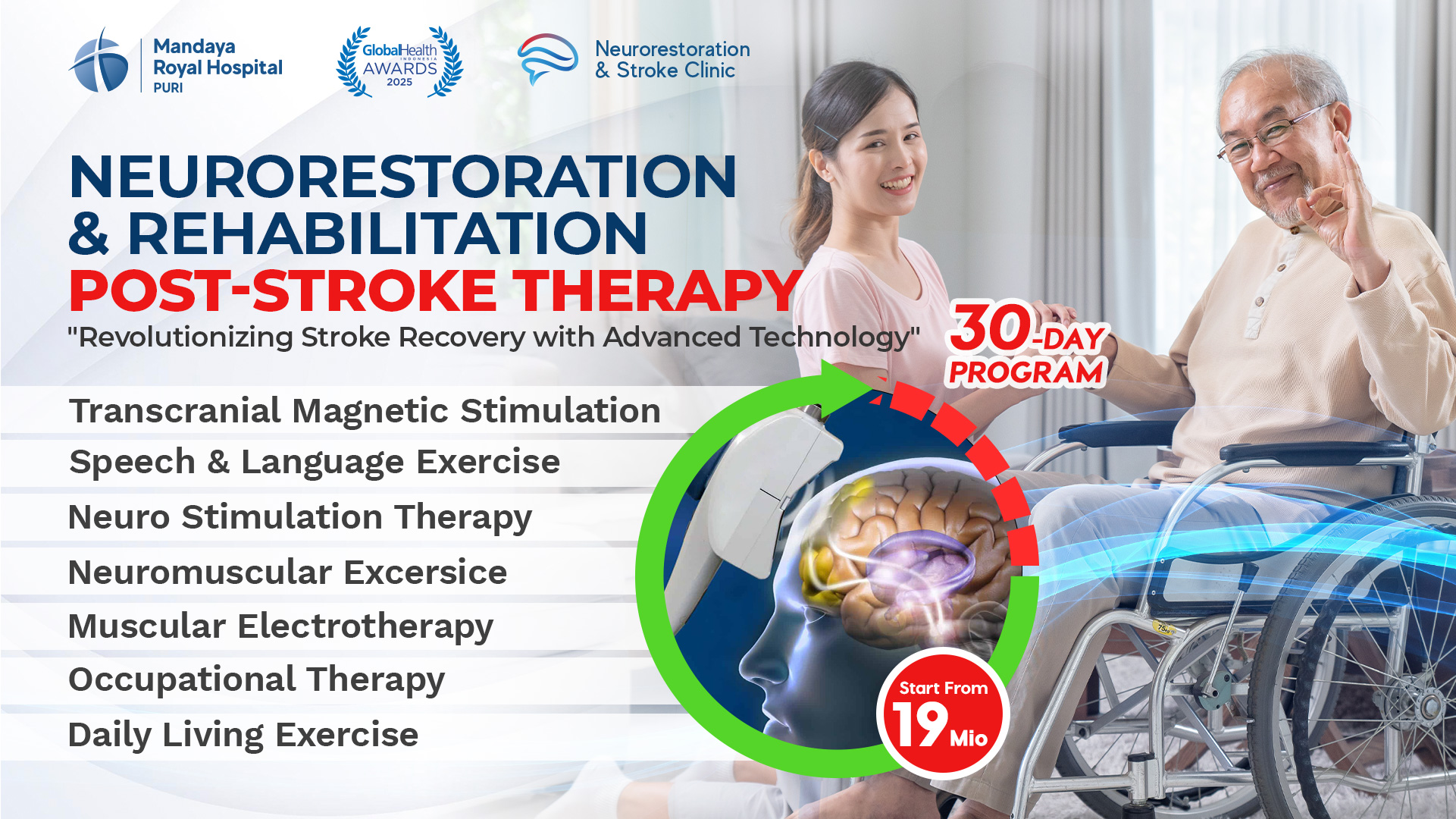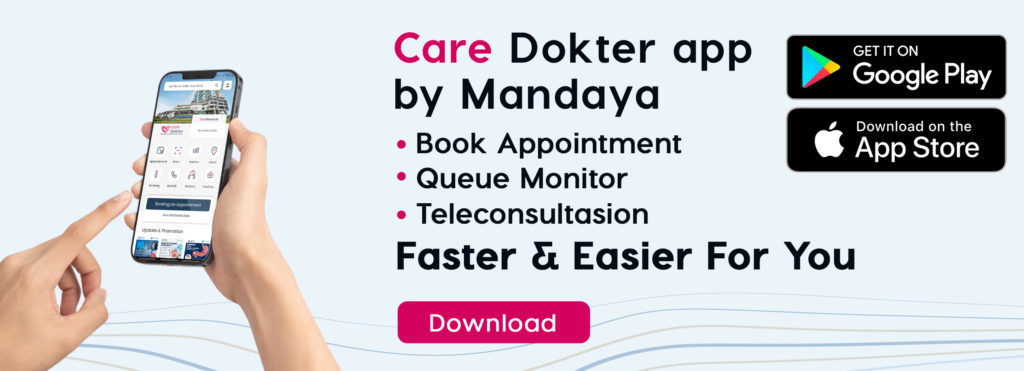Neurorestoration technology is widely used in the medical field to maximize and optimize post-stroke therapy, helping patients recover nerve functions that have been lost or damaged due to stroke. This technology is not only available abroad—hospitals in Jakarta and Tangerang, such as Mandaya Royal Hospital Puri, also offer post-stroke therapy with neurorestoration technology.
Contents
Neurorestoration Technology in Post-Stroke Therapy at Mandaya Puri Hospital
Neurorestoration is a field focused on restoring nerve functions lost or damaged due to injury or disease. It includes various strategies such as cell therapy, gene therapy, biomaterials, electrical stimulation, and computer-assisted treatments. Neurorestoration is even considered to have the potential to address global health challenges such as stroke.
Mandaya Royal Hospital Puri offers intensive post-stroke therapy programs lasting 14 and 30 days that include neurorestoration. One of the technologies used is Transcranial Magnetic Stimulation (TMS).
TMS is a non-invasive procedure that uses electromagnetic pulses to stimulate nerve cells. It can improve symptoms of neurological disorders such as stroke, as well as mental health conditions.
Besides stroke, TMS can also address symptoms of other conditions such as:
- Depression
- Obsessive-Compulsive Disorder (OCD)
- Anxiety Disorders
- Post-Traumatic Stress Disorder (PTSD)
- Motor dysfunctions due to Parkinson’s disease and multiple sclerosis (MS)
In stroke treatment, TMS can enhance motor recovery. Researchers believe that magnetic pulses from TMS can alter the activity of the motor cortex, the brain area responsible for voluntary movement.
A journal article from 2017 even noted that TMS could improve post-stroke swallowing difficulties by stimulating the motor cortex.
TMS Procedure in Mandaya Puri’s Post-Stroke Therapy Program
TMS is an outpatient procedure, so patients don’t need to stay overnight in the hospital.
Before the procedure, patients will be asked to remove any magnet-sensitive items, such as jewelry.
Here is how the TMS procedure works:
- The doctor will ask the patient to wear earplugs to reduce the clicking sound from magnetic pulses.
- The patient will sit in a comfortable chair.
- General anesthesia is not used, so the patient stays conscious throughout.
- For first-time sessions, the doctor will measure the patient’s head to determine where to place the magnetic coil and adjust the TMS machine settings.
- The coil is placed over the front area of the brain.
- During the procedure, patients will hear clicking sounds and feel tapping sensations under the coil.
- The session typically lasts 30–60 minutes. Afterward, the patient can go home and resume normal activities.
Benefits and Advantages of TMS for Post-Stroke Therapy
Here are several benefits and advantages of TMS in post-stroke therapy:
- Non-Invasive: TMS does not involve surgery or anesthesia. Patients can go home immediately after the session.
- Minimal Side Effects: Side effects are usually mild, such as headache, discomfort, dizziness, or tinnitus (ringing in the ears). Serious side effects like seizures are extremely rare (less than 0.01% risk).
- Effective: A 2017 study showed TMS could improve swallowing difficulties in stroke patients by stimulating the motor cortex.
- Complementary: TMS can be combined with other post-stroke therapies to maximize recovery outcomes.
14- & 30-Day Post-Stroke Therapy Programs at Mandaya Puri Hospital
Mandaya Royal Hospital Puri offers two intensive post-stroke therapy packages: 14 days and 30 days, allowing patients to choose based on their condition and needs.
The program includes various therapies for stroke patients, such as:
- Neurology consultation
- Physical medicine and rehabilitation consultation
- Neurostimulation therapy
- Neuromuscular exercises
- Muscular electrotherapy
- Occupational & daily living therapy
- Speech & language exercises
These therapies are conducted by the hospital’s neurology team. For TMS procedures, the attending doctors are:
- Dr. dr. Yetty Ramli, Sp.N (K)
- Dr. Djung Lilya Wati, Sp.N
- Dr. Pukovisa Prawiroharjo, Sp.N (K), Subsp.NGD, PhD
Mandaya Royal Hospital Puri has at least 8 neurologists available Monday through Saturday. In emergencies, neurology specialists are on call 24/7.
Stroke Screening Packages at Mandaya Puri Hospital

In addition to intensive post-stroke therapy, Mandaya Puri also offers stroke screening packages.
Remember, stroke doesn’t occur suddenly. It’s important to undergo stroke screening to help prevent it in the future.
If you are interested in the 14- or 30-day post-stroke therapy program at Mandaya Puri Hospital or wish to consult with our medical team, you can use the Chat feature via WhatsApp, Book Appointment, or the Care Dokter app—available on Google Play and the App Store—for easy visits, queue tracking, and more information.



